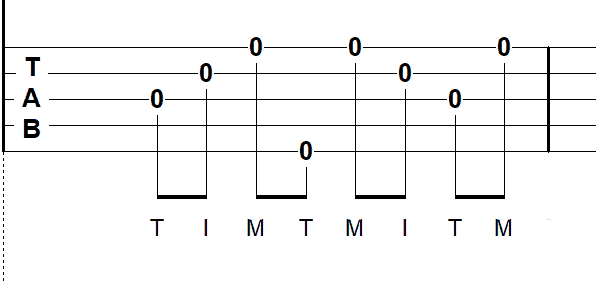When playing the 5-string banjo for bluegrass, the 3-finger style is the go to technique. A seldom talked about topic for players trying to hone in their skills is having a strong right-hand technique. Of course, this is assuming you are playing right-handed - if not it would be your left hand. A strong right-hand technique is essential in getting a good tone and rhythmic feel to your playing, and can open up a new world to how you approach your playing.
In this lesson, Deering artist Hank Smith demonstrates some exercises and techniques to help you improve the consistency of your right hand attack and ways to achieve different types of tones.
On an electric guitar there are various ways you can affect your tone by adjusting the volume and tone knobs or moving the pickup switch. On the banjo you can affect your tone in a similar way via different right hand techniques. Using a forward/reverse banjo roll as an example roll, try experimenting with the different techniques below.

Dynamics refer to how loud or how soft you are playing. A good exercise to get better control over your right hand is to adjust your dynamics without changing your tempo. Practice playing louder without speeding up and then try to play softer without slowing down. As always, using a metronome is highly recommended.
When your right hand plays in different locations above the head of the banjo you achieve different tones and volume. When you play closer to the neck you get a softer, more mellow tone. When your hand is playing closer to the bridge you will get a brighter, louder tone. Practice getting different tones by playing your forward/reverse roll close to the neck and then close to the bridge. Listen for the differences. You can blend this exercise with the dynamics exercise above.
By adjusting the way your 3 fingers are positioned relative to one another you can greatly affect your tone. Take a note of your right hand position. Try lining up your thumb, index finger, and middle finger more or less in a row and play your forward/reverse roll. Now try putting your hand in the type of position that J.D. Crowe used where the thumb is moved forward and your fingers are separated. This will give you a bigger, brighter tone. Neither is right or wrong, it just depends on the type of tone you are trying to achieve.
Be sure to watch the video and let us know any questions or comments you have in the comments section below.
Come learn 37 ways and more to make your G, C, and D chords on the 5-string banjo in Episode 4 of our Clawhammer Banjo Workshop Series with Michael Miles....
Welcome to the third episode of our pre-recorded clawhammer banjo workshop series with the talented Michael Miles. In this episode, Michael and his co-host,...
Welcome to the second episode of our pre-recorded clawhammer banjo workshop series with Michael Miles. Throughout this episode, Michael and co-host David...
Join us for the premiere episode of our pre-recorded clawhammer banjo workshop series with Michael Miles. Discover how to accompany yourself or others while...
3733 Kenora Dr.
Spring Valley, CA 91977
COMMENTS